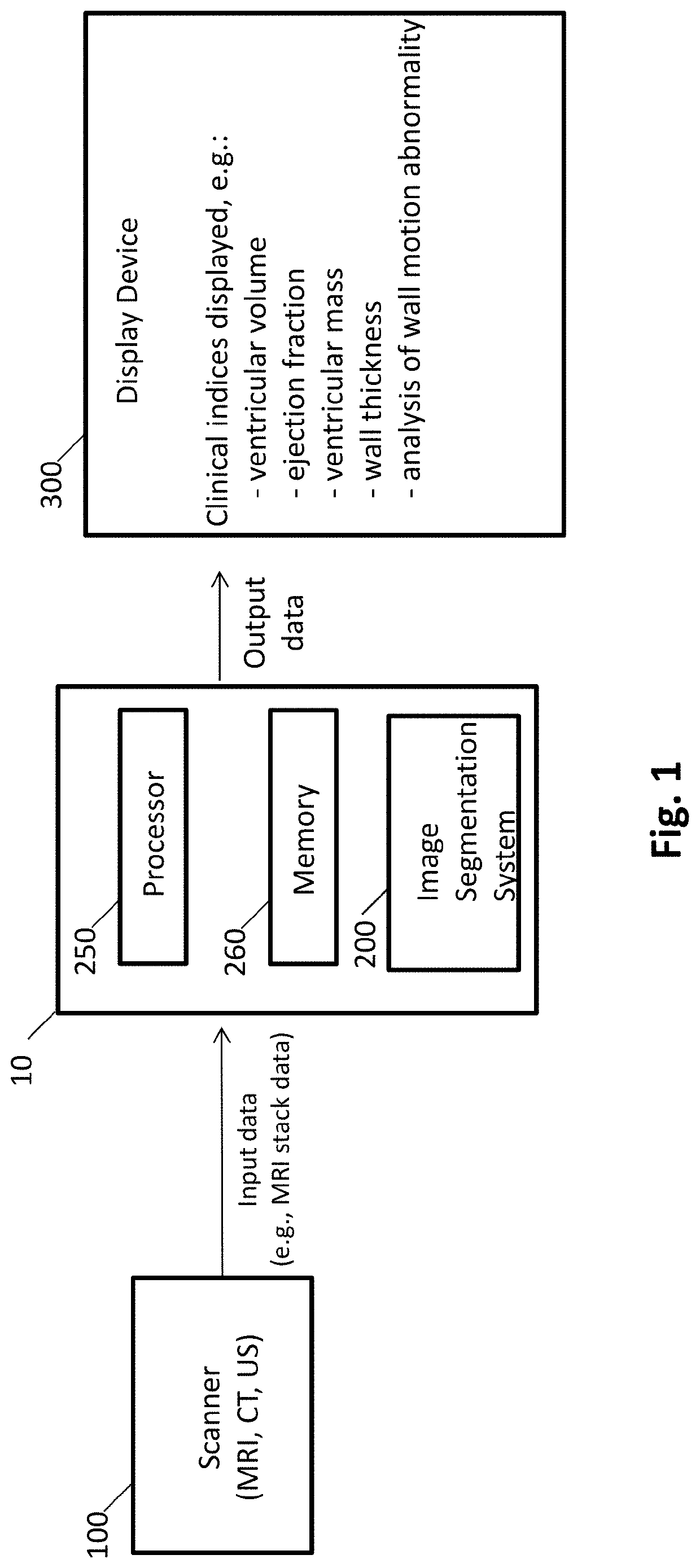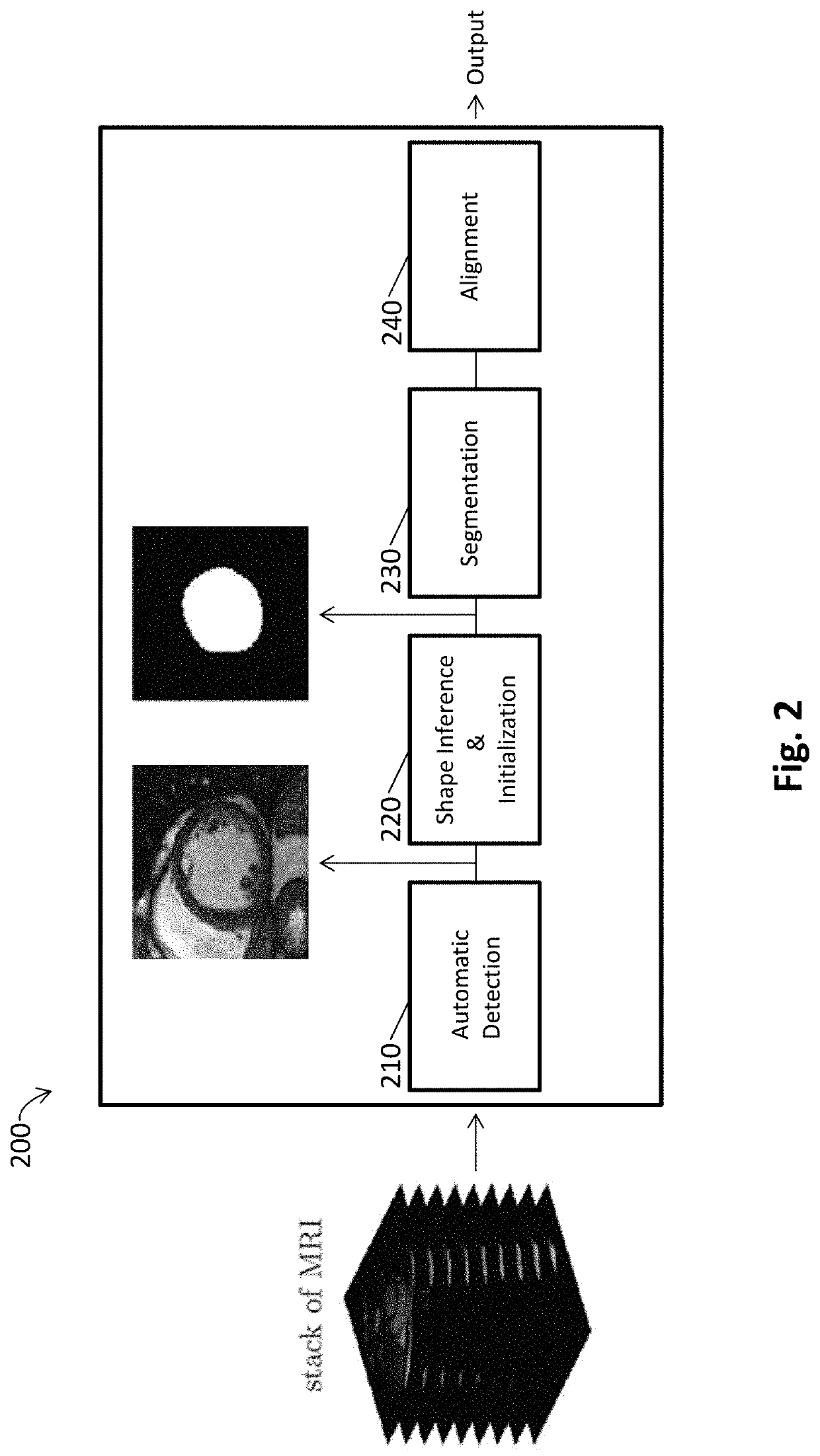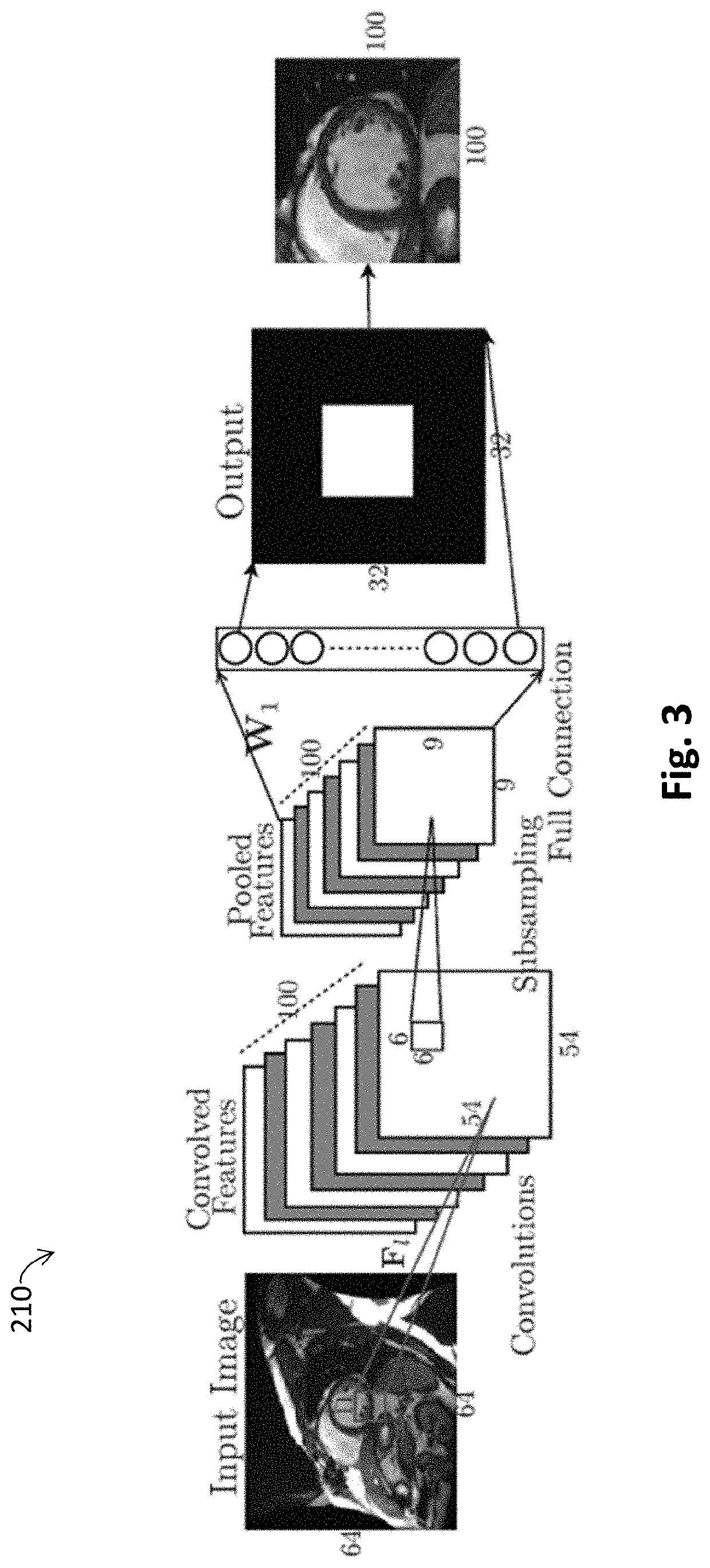Automated segmentation of organ chambers using deep learning methods from medical imaging
a technology of deep learning and organ chambers, applied in image analysis, image enhancement, instruments, etc., can solve the problems of inhomogeneity of intensity, dynamic motion, time-consuming and laborious manual segmentation, etc., and achieve the effect of reducing misalignmen
- Summary
- Abstract
- Description
- Claims
- Application Information
AI Technical Summary
Benefits of technology
Problems solved by technology
Method used
Image
Examples
example 1
A Combined Deep-Learning and Deformable-Model Approach to Fully Automatic Segmentation of the Left Ventricle in Cardiac MRI
[0147]As reported in Avendi et al. 2016 Medical Image Analysis 30: 108-119, segmentation of the left ventricle (LV) from cardiac magnetic resonance imaging (MRI) datasets is an essential step for calculation of clinical indices such as ventricular volume and ejection fraction. In this work, we employ deep learning algorithms combined with deformable models to develop and evaluate a fully automatic LV segmentation tool from short-axis cardiac MRI datasets. The method employs deep learning algorithms to learn the segmentation task from the ground true data. Convolutional networks are employed to automatically detect the LV chamber in MRI dataset. Stacked autoencoders are used to infer the LV shape. The inferred shape is incorporated into deformable models to improve the accuracy and robustness of the segmentation. We validated our method using 45 cardiac MR datase...
example 2
Automatic Segmentation of the Right Ventricle from Cardiac MRI Using a Learning-Based Approach
[0205]This study accurately segments the right ventricle (RV) from cardiac MRI using a fully automatic learning-based method. The method utilizes deep learning algorithms, i.e., convolutional neural networks and stacked autoencoders, for automatic detection and initial segmentation of the RV chamber. The initial segmentation is then combined with the deformable models to improve the accuracy and robustness of the process. We trained our algorithm using 16 cardiac MRI datasets of the MICCAI 2012 RV Segmentation Challenge database and validated our technique using the rest of the dataset (32 subjects).
[0206]Results: An average Dice metric of 82.5% along with an average Hausdorff distance of 7.85 mm were achieved for all the studied subjects. Furthermore, a high correlation and level of agreement with the ground truth contours for end-diastolic volume (0.98), endsystolic volume (0.99) and ejec...
PUM
 Login to View More
Login to View More Abstract
Description
Claims
Application Information
 Login to View More
Login to View More - R&D
- Intellectual Property
- Life Sciences
- Materials
- Tech Scout
- Unparalleled Data Quality
- Higher Quality Content
- 60% Fewer Hallucinations
Browse by: Latest US Patents, China's latest patents, Technical Efficacy Thesaurus, Application Domain, Technology Topic, Popular Technical Reports.
© 2025 PatSnap. All rights reserved.Legal|Privacy policy|Modern Slavery Act Transparency Statement|Sitemap|About US| Contact US: help@patsnap.com



